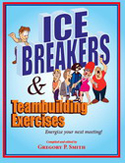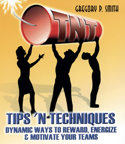“Strength does not come from winning. Your struggles develop your
strengths. When you go through hardships and decide not to surrender,
that is strength” – Arnold Schwarzenegger
Managing Talent and Driving High Performance
Talent management has as its ultimate goal creating a work environment
that finds the best talent affordable . . .allows good employees to stay
as long as possible, and encourages mismatched employees to leave sooner
or find more compatible jobs elsewhere.
In my years as a consultant, I have identified eight basic elements
essential to creating a high performance organization. While each one,
like the sails of a ship, can harness the power of the wind, all eight
are needed. A sail not properly set or missing hinders the progress of
the ship and causes frustration among the crewmembers.
Number 1–A Clear Sense of Direction and Purpose.
Everyone wants to be paid for what they do, but good employees want to be
part of an organization that stands for something and gives them personal
fulfillment and meaning. When an organization has a clear sense of
direction and purpose, people are willing to give more. Many
organizations are now allowing their employees to donate time to
non-profit organizations, or spend their off work hours building houses
for Habitat for Humanity.
Number 2–Caring Management. Interpersonal skills are an essential
element of the high-retention culture. People want to feel management
cares and is concerned for them as individuals. Yet, poor “soft skills”
are one of the biggest factors that drive people away.
Number 3–Flexible Benefits and Schedules Adapted to the Needs of the
Individual. In today’s workplace, flexibility rules. One-size-fits-all
approaches to benefits have long since lost their effectiveness. Workers
will migrate to a company whose benefit packages and schedules help them
meet the demands of their lives, whether they are single parents, adults
who care for aging parents, older workers, younger workers, part-time
workers, or telecommuters.
Number 4–Open Communication. In our technological age, people have a
large appetite for information, and they want it instantly.
High-retention workplaces place high priority on delivering the right
information to the right people at the right time using the right
methodology. Companies that leave employees in the dark risk damaging
morale and motivation–not to mention compromising their ability to make
a quick course change in the marketplace.
Number 5–A Charged Work Environment. People want to enjoy their work.
They shun boring, bureaucratic, lifeless work environments. That is why
high performance workplaces do not bother with the traditional ways of
doing things. They find new ways to make work mentally engaging and
physically energizing. They also ask for, listen to, and implement the
ideas and suggestions of those who work for them.
Number 6–Performance Management. It is becoming increasingly more
difficult to find competent, motivated workers who have good attitudes
and work ethics. Because of this, knowing how to manage performance is
important. Performance management includes a new set of skills, tools,
techniques, and processes to align an individual and his or her behavior
with the goals of the business enterprise.
Number 7–Reward and Recognition. All humans need to feel appreciated.
Reward and recognition programs help meet that need. A workplace that
rewards and recognizes people builds higher productivity and loyalty, and
can create consequences for desired behavior that leads to organizational
success.
Number 8–Training and Development. Many workers just want a paycheck,
but the best workers want opportunity.
They want to develop their skills and potential and enhance their ability
to contribute and succeed. Training and development gives people greater
control and ownership over their jobs, making them capable of taking care
of customers and creating better management-employee relationships.
Greg Smith
www.chartcourse.com
No related posts.
















One Response to Talent Management Strategy and Leadership Development–Eight Elements